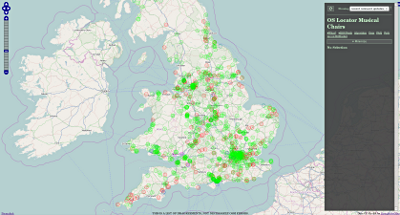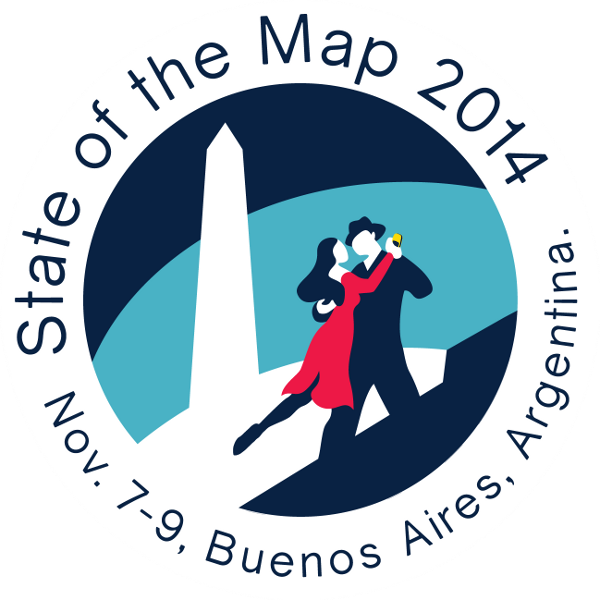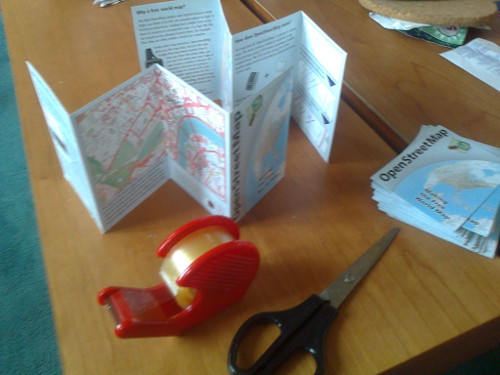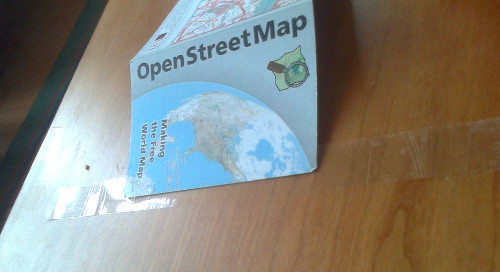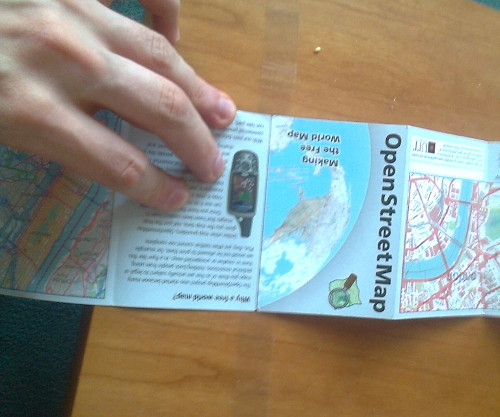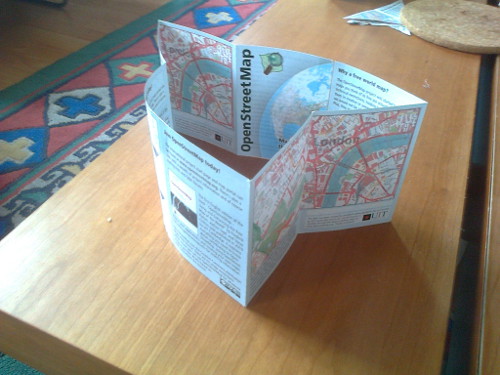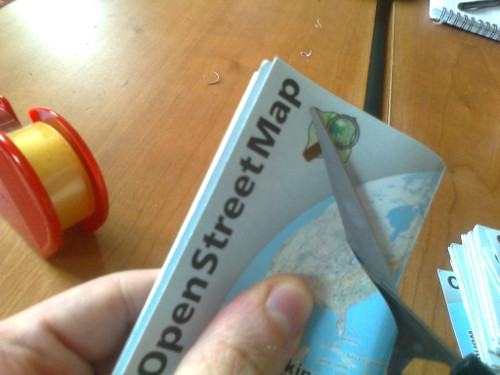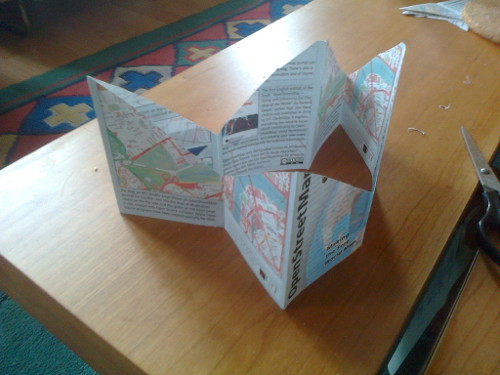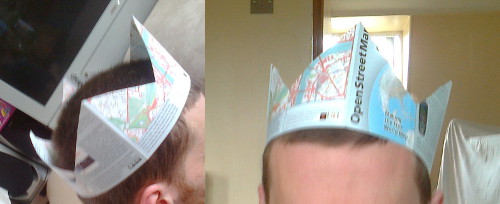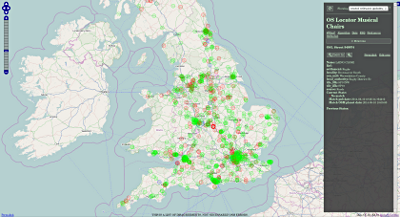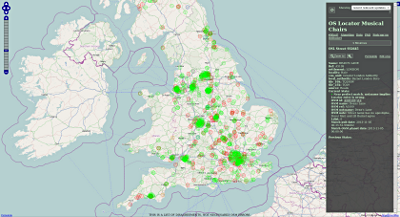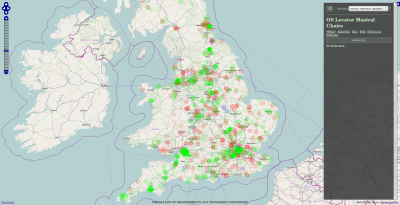So I was rubbing shoulders with the traditi-gis crowd on Tuesday & Wednesday last week for the FOSS4G GeoHack event in Nottingham University. The team that I gravitated towards was being run by DEFRA folks eagerly clutching copies of their Open Government Licensed air quality data and providing the task of creating an air-quality-aware router for cyclists, walkers or other health conscious individuals.
The data is fairly interesting as it’s a mix of measured and modelled data, and the most high-resolution data provided was that which was modelled specifically along a patchy network of major (OS-Meridian-derived from what I could tell) roads - so not necessarily the easiest thing to work with.
The plan from the table involved using postgis & pgRouting to route along the provided linestrings & build a web interface on openlayers for users. Now, OS Meridian isn’t known for being particularly routable at the best of times, and the patchy nature of the provided linestrings was making this look like a daunting problem. On top of that I personally was worried about the ambition of building from scratch a from-to routing interface on top of openlayers in the remaining time (I’ve spent two day stints just working on single fiddly javascript bugs on web maps before). The stumbling hurdle seemed to be that everyone was running a windows on their laptops and so needed to negotiate use of a “server” with the requisite software installed for their purposes.
Now, see, I’m an openstreetmap dude. And I was a bit puzzled by why we weren’t just using all the tools we already have. We’re quite spoiled in the openstreetmap community, having a largely complete & high quality, inherently routable road network in many countries and a decent array of web fronted routing tools, even counting just the open source ones. And just because we were given the data based on OS Meridian, doesn’t mean we’re stuck with OS Meridian for the routing as long as we’re able to find a reasonable way to apply the measured data to the new road network. Yet people were still intent on re-doing all the legwork in patching together a melange of tools.
I’ve become quite familiar recently with Dennis Luxen’s OSRM (Open Source Routing Machine) through my work on GPS trace analysis in That Shouldn’t Be Possible™. The great thing about OSRM of course is that it comes with a pretty impressive web frontend that’s stupidly quick to set up and truly shows off the speed & interactiveness you can get with OSRM. OSRM’s also very customizable - the “profile” determining the weights given to each road is defined by a lua script. This gives a low barrier of entry to users wanting to create even fairly complex rules.
It just so happened that the hack I wanted to perform wasn’t quite something that the lua scripting would allow. I wanted to add an extra weight to some streets by edge, and the OSRM lua calls are really built around assigning weights to whole ways. But this is Free software (“open source” if you like). We don’t tend to let things like that stop us. So I hacked a call to a postgres database (using the wonderfully straightforward libpqxx) into the inner loop of OSRM’s extractor pre-processing tool, modulating the weight of each edge by the result of this call. Really, it was such an easy hack that the hardest bit was remembering how painful string manipulation is in c++. And almost as much effort went into getting the build system to cope with the new libpqxx dependency, but hey, that’s c++ for you.
As it was, I was left with a few options over how to apply the air quality data to the roads. In the end, I decided to use postgis to locate the nearest linestring in the air quality dataset for each edge and assign that air quality to it. If there’s no air quality linestring within ~100m of the target edge, we assume a reasonably high air quality. There are many other ways we could have done it involving various interpolation schemes, but this we decided was good enough for a proof of concept.
I only had my little cheapo netbook with me and I spent 80% of the first day worrying about why my wifi card wasn’t working, but fortunately I was able to scrounge some network access from others for any pieces of the necessary toolchain I was missing and remembered I had the greater_london osm extract from geofabrik lying around (my little netbook is comfortably able to cope with London given enough patience), so by the Wednesday morning I had a built & working demo london dataset. So there you go. Sixteen lines of c++. This is the power of Free software and open source that you don’t get anywhere else.
We presented our work along with a nice looking “my local air quality” map put together by others (including a latecoming strk who also provided the air quality overlay used in our OSRM hack) using cartodb, and came in third. Which is not bad considering the amount of work some of the teams had clearly put into their projects over the two days.
The (very hacky) code is on github @ http://github.com/risicle/Project-OSRM branch pmp. Beware there are a good few hardcoded strings in there - it is only a proof of concept.
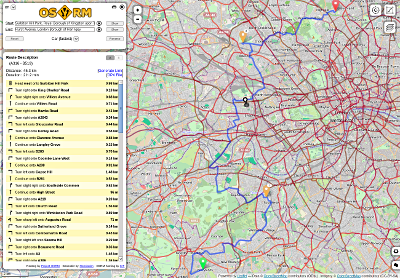
The problem naturally with this tool and its limited dataset is that it will always just try and route around the areas it has data for. Authorities will necessarily measure and model those areas that are likely to have poor air quality and the resultant routes will more or less just try their best to stick to backstreets. This is a data problem that I will leave people like Tom Chance to rant about. If we wanted to just route across streets for which data is present (as was probably the organizers intention), it would have been a simple one line change to simply weight edges beyond n metres from an air quality linestring out of existence.
I left the GeoHack with a little bit of worry in the back of my mind as to why this solution wasn’t obvious to others. I think it’s that traditi-gis folks still see openstreetmap as a pretty tile (“base layer” as they would say) provider, and not the massive dataset and tool resource it is. This is possibly an attitude hangover from Google Maps, which for years people chose as their default “base layer”, but would give you nothing but tiles. No data. No fun. And many people see openstreetmap purely as a Google Maps replacement. It’s understandable. But we clearly still have a lot of awareness work to do amongst even our neighbour communities.
